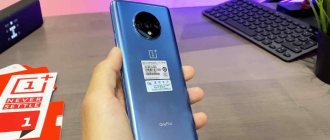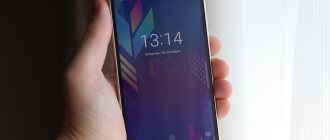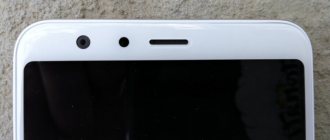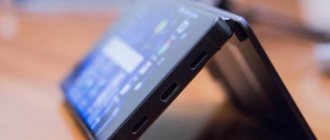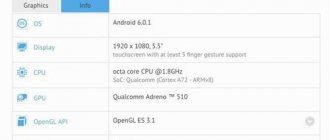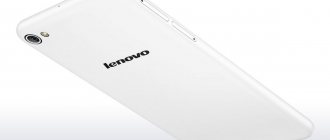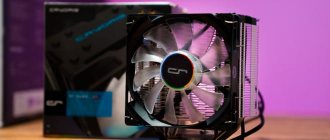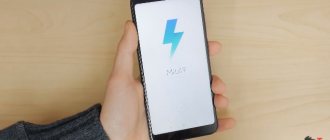Equipment
Big device, big box. Everything here follows exactly this principle. How else?
The packaging is bright, beautiful, made of high-quality cardboard and with good printing. Inside, the device itself is neatly laid out, under which a few accessories are hidden: a charger, a Micro USB cable. The latter were not the case in my case. “Axes” disappeared somewhere even before the device arrived to me for testing. Anyway.
The main thing is that we know and remember that they exist, and you will have them if you decide to buy Lenovo Phab Plus .
Reviews
Screen 6.8 inches
— Color reproduction at a high level;
— Build quality is a plus;
-Powerful system that will handle most applications;
— Good cameras;
— Lenovo Phab Plus PB1-770M 32Gb LTE has a pleasant pricing policy, which undoubtedly pleases;
— You can make calls from this tablet;
— Fits perfectly in the hand;
— Convenient size;
— Responsive touchscreen, this is noted by the majority of users of this device;
— High-quality sound, especially from the speakers;
-Convenient location of function keys;
— Good communication;
— There are usually no complaints about Wi-Fi;
— In addition, the tablet interacts well with GPS satellites, so it can be used as a navigator;
-Naked android as a plus;
Pleasant to the touch back panel
— Capacious battery, so the tablet can be used for up to 2 days;
-During operation, the processor heats up a little;
— Convenient unlocking;
— Lenovo Phab Plus PB1-770M 32Gb LTE is ideal for most games;
— The tablet doesn’t weigh much;
— It slips in your hands, so you need to watch it all the time;
— Support 4 G;
Design
Let's take a look at the appearance of the Lenovo Phab Plus. What do you see?
iPhone 6? Personally, I see an almost complete copy of it. At least, it’s immediately clear which device was copied from and what served as the basis for developing the appearance of our hero.
Perhaps 2020 can be characterized as a year of blatant and shameless copying of everything and everyone (Apple products in the first place). And all because no one cares anymore. No one will go to court, so no one is afraid of anyone. And if any decision is made, then it can always be challenged, sent for reconsideration, simultaneously prolonging this whole mess with endless attempts to reach an amicable agreement among ourselves. Allegedly.
In my opinion, Lenovo Phab Plus is an oversized iPhone 6 Plus.
Rounded edges, metal body made of anodized aluminum, wide inserts for antennas. This phablet is the result of the work of some budding Asian designer who, on the way to his office, found a “copy your iPhone yourself” kit. And you know what's most interesting? I don't think there's anything wrong with that. Downright criminal. They did it and did it. The product turned out to be very nice, even without the 2.5D glass on the front panel.
Let's go over the main elements of appearance that you can catch on and tell us something in more detail.
The device looks good both from the back and the front. There is a blank area below the display. Touch keys here are part of the system interface.
Above the screen there is a standard set of front elements: a camera, sensors and a speaker grid, under which the LED for various notifications is also hidden. Nothing unusual.
There are no protruding frames around the perimeter of the front side. This means that you should not place the gadget face down. Scratches may appear and what, one wonders, will you do in this case?
By the way, they can also appear on the reverse side. Moreover, they will definitely appear there, and not even because solid particles can get between the table and the back and scratch the body. No.
The fact is that with such dimensions, you will definitely either drop the device or catch it on the edge of the table.
This is a matter of time, since using the device is not very convenient. You will need remarkable skill, but we will talk about this in the next section.
The speaker is located on the back side, next to the main camera, under a plastic insert with a characteristic perforation. Considering the size of the device and the wide plastic mesh covering the speaker, you expect it to produce at least good sound. But no!
In fact, the speaker here is the most ordinary.
The volume is above average, the sound quality is not outstanding at all, ordinary, I would say. And given the controversial location, the speaker can easily be covered with the palm of your hand while watching videos or playing games, that is, in a horizontal orientation. The result is something whistling, hissing, and clearly not striking the imagination.
A detailed examination revealed one not critical, but still noticeable jamb. The plastic plug on the back does not fit tightly to the body. Perhaps this is a problem only with my copy.
But the camera lens doesn’t stick out here.
It is made flush with the backrest, which is good news. On the other side! They wouldn’t be able to fit a camera into such a housing...
The camera lens doesn't stick out here
Closer to the bottom edge there are stickers that definitely spoil the whole raspberry.
Just like in good old laptops with Windows on board, where you can’t go without stickers about Intel, Nvidia, AMD, with a short list of specifications, and so on. The main thing is to be as tacky as possible.
Fooling with the design of the device, developing a concept for the appearance, even if borrowing the developments of competitors, and in the end ruining the visual impression with two huge stickers? This approach is completely incomprehensible to me.
Why couldn't they come up with something more elegant? For example, make small engravings on the case, like in the iPhone. There it is perceived not as something foreign, but as part of the design.
On the other hand, Sony generally hides all such information in its products on special paper tabs in slots for memory cards and SIM cards. What prevented designers from Lenovo from copying this option, for example?
Why even take competitors into account? Let's dig deeper. Lenovo Vibe S1. There is some neat little product information on the glass back cover. Did you manage to do it as needed? In my opinion, yes. In general, we leave this problem on the conscience of the developers.
Product information in Lenovo Vibe S1
On the right side are the volume and power keys. They are metal, slightly play (quite normal for any modern device) and have a soft but noticeable response.
On the opposite side there is a slot for SIM cards: Micro and Nano. The latter can be replaced with a Micro SD memory card, thereby expanding the internal memory. With such dimensions, engineers could freely place two slots: one for SIM cards, the second only for a memory card. I don't think there would be space for this inside.
The gadget comes in three colors: dark gray, silver with a dark front panel and a gold body and white front side.
Ease of use
I specifically introduced this section, because without considering this point, you shouldn’t study this gadget at all. I want to say right away that you need to get used to the dimensions of the Lenovo Phab Plus. They never compromise at all. And all because of the large 6.8-inch display.
Yes, everything looks great and clear, but using the device in everyday life is inconvenient.
- dimensions: 186.6 x 96.6 x 7.6 mm
- weight 220 g
Before you buy Lenovo Phab Plus, you need to answer a few questions for yourself in advance. First: where to store the device? The device fits into my jeans without any problems, and you can even sit on a chair with them on. However, I don't have the slim version. Winter is still here, and what a winter it is. In tight summer trousers it will be difficult with our phablet.
You can store the device in a bag or backpack. However, this is only if you don't go outside without a bag. And at the same time, you won’t be able to reach into your bag for a smartpad again. In this case, it is useful to pair your device with some kind of smartwatch to quickly view notifications, time, and messages.
And remember that you can’t run out to the store for bread in shorts. This is true for those who cannot leave their mobile phone for a minute.
The second question is actually the actual use. It is inconvenient to use it in bed, and it is completely impossible to use it with one hand, regardless of position in space. And this despite the fact that the corresponding setting for one hand is built into the system.
Writing messages on the virtual keyboard in a vertical orientation is dangerous, as you can easily drop the gadget. It is still round and metallic, which means it is slippery. Want to 100% drop your device? Wear gloves.
Thirdly, you should definitely try the gadget in a store before purchasing. Under no circumstances should you buy blindly (online). You need to clearly know how you will use this device and have a real idea in this regard.
In landscape orientation, the device is convenient to do everything in the world, but only with two hands. If you have a bag or package in your other limb, or you hold on to the handrail in public transport, then sooner or later you will drop the phablet. Again, it is very difficult to use with one hand.
Tablet Lenovo Phab Plus 6.8″ 32Gb LTE Gunmetal (PB1-770M) - Specifications
Review
I purchased the phablet in September and had more than a month of experience using it. I liked the model primarily because of its large screen and the ability to combine the functions of a tablet with a smartphone in one device. The build quality also turned out to be a plus when choosing a device—the body of the device is entirely metal, only at the top the phablet has a plastic insert that covers a large speaker that has the Dolby Atmos function (a proprietary Lenovo development that allows you to improve sound quality and make it voluminous when listening to music or watching videos). The power, volume up/down buttons work clearly and do not play, the body itself is quite thin, despite impressive capacity battery. A full charge of the device lasts for a whole day of work, in my case this is about 3 hours of video, 4-5 hours of Internet and about 1 hour of talking on a mobile phone, while by the evening about 20-25% of the charge remains. Charging is fast, provided you use the charger included in the kit, it charges from 0% to 100% in 1 hour 20 minutes. The speaker of the phablet is loud, even at an average level you can’t hear it and you won’t be able to miss a call, when listening to music or watching videos in headphones, the sound is clear and rich (if you wish, you can choose to manually adjust the equalizer - some bass, some low, in general, make the sound according to your preferences). 2GB of RAM is enough for everyday tasks, and for most games, I don’t play myself, but the child has downloaded about 10 games and enjoys playing with the phablet, although he has a tablet and a computer; apparently, my son also likes the portability of the device. The built-in memory is 32 GB (about 27 GB available), enough for applications and for storing movies with photos, if you add a microSD memory card 64 GB, as in my case, it is unlikely that such a volume will ever be filled to capacity. Although the phablet is designed for two SIM cards, the slot for them is combined with microSD, or 1 SIM card and a microSD memory card, or 2 SIM cards. The device communicates reliably, the Wi-Fi connection is also stable. Despite the fact that Lenovo managed to create a fairly balanced device, combining the functionality of a smartphone with the dimensions of a small tablet, the phablet also has disadvantages. The most important drawback is that the device’s screen does not have a protective coatings (immediately order protective glass. Secondly, the phablet body is 6.8 diagonal, it’s not very comfortable to hold in your hand, since the body material is metal, the device is slippery and tends to slip out of the palm, and there are no protective covers for sale, and the official The Lenovo company website in Russia does not offer any cases or protective glass. Therefore, I recommend that you first take a closer look at the device itself in the store, and if you decide to buy, wait and first order a case and protective glass, and when you receive them, feel free to head back to the store to purchase. I think that with this functionality at this price there are no competitors to the phablet, feel free to purchase it.
Display
This is the most important thing in a smartphone (or is it a tablet?). Indeed, it was precisely because of the giant IPS panel installed here that the device received such significant dimensions.
- 6.8" IPS display
- resolution 1920 x 1080 pixels
- pixel density 326 ppi
The screen itself fits perfectly into the body. Nothing is loose anywhere, does not stick out, there are not even gaps where dust and other small particles of debris could get in. In addition, the front glass and the matrix itself merge with the frames, thereby creating the impression that the entire front side is the screen. The mysteries are also played up by the default dark wallpaper. You can't see where exactly the display ends, so it all looks cool.
"Invisible" display frames of Lenovo Phab Plus
In fact, the side frames here are very noticeable - as much as 6 millimeters, which by modern standards is higher than the norm.
The viewing angles are good, nothing criminal comes out when the device is tilted. IPS matrix after all.
Like a giant iPhone
Lenovo has a unique approach to design. The Chinese took and copied the iPhone 6, resulting in the Lenovo S90. It worked, we repeated it again, but in a different format, and now Phab Plus has been released. We put the iPhones next to him on the table and compare, the similarities are obvious. what kind of comments are there?
This metal case can also fit into your pants pocket if desired. But if you are a fan of tapered fashion, then it is better not to experiment, otherwise you will get stuck.
And remember, the Lenovo Phab Plus is slippery as hell as the iPhone 6.
Look at the tablet, you won't be able to use it with one hand. Ready to sacrifice convenience and comfort - take it. But during conversations, your fingers get numb and you have to either endure it or talk through a headset. But if you spend 5-10 minutes making calls a day, most often you write messages on Facebook and Vkontakte, then this is your device format. It is convenient to use the keyboard with two hands; there were almost no errors on the standard Google layout. I make few calls, but the device turned out to be suitable for correspondence.
Lenovo Phab Plus (Model PB1-770M) Specifications
- Qualcomm Snapdragon 615 processor (MSM8939) 1.5 GHz (64-bit, 8 Cortex-A53 cores)
- Adreno 405 graphics accelerator
- RAM 2 GB LPDDR3
- 32 GB eMSP data storage
- Supports Micro SD memory cards up to 64 GB
- battery 3500 mAh (lithium polymer)
- connectors: Micro USB (2.0), audio output 3.5 mm
- sensors: light and proximity sensor, accelerometer, electronic compass, hall sensor
Wireless interfaces:
- 2G, 3G 4G (LTE bands 1, 3, 7, 8, 20, 38, 40)
- Wi-Fi (IEEE 802.11 ac), Bluetooth 4.0
- number of SIM cards: two slots for SIM cards (micro and nano)
- GPS, aGPS, GLONASS
Gigantomania: Lenovo Phab Plus review
The story of smartphones with indecently large diagonals was started by Samsung about five years ago. The first “swallow”, Galaxy Note, was really monstrous for its time, although there were benefits from such a size. When the Note was well received, Samsung expanded its phablet line with mid-range offerings - the Galaxy Mega 5.8 and 6.3. Around the same time, the first Huawei Ascend Mate with a diagonal of six inches was released. Since then, the large diagonal has ceased to be a symbol of status and wealth. And it moved into the middle price category and into the category of things that are bought out of necessity. For example, to combine a dialer and a tablet in one. Today, it’s hard to surprise anyone with six inches in a smartphone; every manufacturer has them in their portfolio, although they seem to have real popularity only in Asia, which is completely entangled in high-speed Internet and mobile television. And the concept of “shovel” slowly migrated to Fr. Particularly large smartphones that are a hybrid with a tablet are rarely released today. The hero of this review, the Lenovo Phab Plus phablet, can be classified as an exotic animal with its 6.8-inch display. And like any exotic, you can truly enjoy it only when it suits the place and the scenario of use.
What is this?
This is a hybrid of a smartphone and a tablet with a diagonal of 6.8 inches and mid-level hardware. The device has a display size different from a tablet. From the smartphone - the frame and dimensions of the case (Phab, with all its parameters, strives to be compact). Lenovo Phab Plus has a FullHD display (324 ppi pixel density), a 64-bit mid-range Snapdragon 615 processor and 2 GB of RAM. A typical picture for a middle-class smartphone at the time of the announcement (it took place in September 2020 at IFA).
Who is this for?
Lenovo positions this model as an ideal solution for users who are used to communicating in writing, make few calls and do not go online. In general, there is a feeling that it is for young people. But if we talk about the youth of the post-Soviet space, poor and brand-oriented, then in their hands it is difficult to imagine a mid-level gadget with a large screen and without an 8-megapixel front camera with a flash. But the number of adult men and women who use tablets as smartphones on the streets of at least Ukrainian cities is more than enough. These are users who are less interested in characteristics and nameplates, but are interested in the price and display size. For some reason, it seems to me that for them such a device should be a good option to replace a hopelessly outdated 7-inch tablet.
He is so big. How to use it?
My love for smartphones with large displays stopped at around 5.5-5.7 inches. Therefore, for my everyday tasks the device turned out to be too big. However, this is no reason not to praise its dimensions. 18.7 centimeters long and less than 8 millimeters thick. The smartphone weighs 229 grams. And the thickness of its frames is not very superior to that of Meizu Pro 5. To be honest, the phablet is a bit heavy in the hand, you need to look for balance. In the process of finding balance, by the way, the screen lock key constantly gets under your finger, this is inconvenient because it is soft and small.
In general, if you use Lenovo Phab Plus for some time, the surprise at its size goes away. But if you take it out of your purse in public, you might be surprised at how many iPhone owners in the area are willing to “take pictures with the monkey.” The editors of gg literally assembled such a zoo in their office in just a couple of minutes.
Lenovo Phab Plus can be held with one hand. But it’s hardly possible to control a phablet at the same time. My scenario for using this device is to carry it everywhere with me, until the moment when I need to show someone some office document or edit it a little. The fact is that Microsoft Office applications are poorly adapted for smartphones. You can do something on a 5.7-inch diagonal, but it’s really easier to type any text in Google Keep or Evernote than in the slow and cluttered Microsoft Word interface. Working with tables is unrealistic. Somewhere on the “tablet” diagonals in Microsoft applications it makes sense. And since the Lenovo Phab combines the compact body of a smartphone and the huge diagonal of a tablet, it’s a really convenient thing to have with you for such tasks. Playing on a phablet of this size is less comfortable than on its “small” counterparts, but more comfortable than on a tablet. Again the same nuances. With reading it’s the same story, but it’s more a matter of habit. When it comes to video or navigation on the road, Phab Plus is a great solution. But still, some office or near-office tasks are just fine on such a device.
The model does not have any identification marks on the front panel, allowing you to understand where it is up and where it is down (in general, most modern smartphones have none or almost none, but I managed to get used to the physical “Home” button in Meizu and Samsung, without them I feel yourself helplessly). Therefore, every time you take it out of your pockets or bag with the wrong side, you have to twist it in your hands. A small life hack: there is a speaker and a camera on top, and nothing on the bottom.
The body is cast from metal. Geeks will be happy. From the back, the device is simultaneously similar to other Lenovo models, Meizu, iPhone, and HTC. In general, for all metal “remnants” smartphones. We had a gray smartphone, but the Phab Plus also comes in gold and dark gray.
The strips on the back of the case are plastic inserts, behind which various antennas can be hidden.
The 7.6 mm thick case houses a 3500 mAh battery. How? Good question. Somehow it fits.
There is nothing interesting in the layout of buttons and connectors. For Android - on-screen keyboard. To lock the screen and control the volume, there are two buttons on the right side. Both have a soft and short stroke. The volume rocker button, in my opinion, does not stand out well on the body, and it lacks tactile feedback when pressed. Card slots (microSIM and microSD in the same slot with nanoSIM) are on the left behind the plug. MicroUSB on the bottom, audio output on the top.
The camera does not protrude, except for a minimal elevation that protects the peephole from possible contact with the surface. The camera and flash are located on a rubberized insert at the top of the body, which visually closely resembles a speaker. In fact, this is the speaker. Loud, but not very “artistic” sound. The location is not good because the sound is muffled on a table or soft surface.
The case looks very decent, well assembled. But if you try to press on it from behind, just below the center, the metal will move a little under your fingers. In my opinion, no problem. The battery stays in place.
What kind of screen does it have?
Lenovo Phab Plus is equipped with an IPS display. With oleophobic coating. The specifications do not say anything about protective glass (there is no such information on the box with the smartphone either), it seems that it is not there. After a long life in the bag, the display received a couple of scratches, but still held up well.
There is automatic brightness adjustment. Works fine. Screen pixel density – 324 ppi. This is only 2 ppi less than the iPhone 6. If you are not strong in technical characteristics, then for you this phrase should only mean that the picture on the screen is smooth, no worse than that of Apple smartphones.
Maximum display brightness is 263 cd/m2. And this is the real problem. In summer there will be problems with screen readability under the sun. Despite the fact that there is no air gap, which also does not have the best effect on the behavior of the display in direct sunlight. But the minimum brightness here is also low, so the image on the display looks contrasty, 945:1 is a good indicator.
The color gamut is narrowed, but sRGB falls short, but purely symbolically. The vast majority of users will not notice this. But the calibration here is decent, the color temperature is purely symbolically “colder” than the reference 6500K, in the light areas of the image the colors deviate a little more from the standard, and in the dark ΔE does not exceed 4. This means that pictures, videos - all this will look as natural as possible. And the texts will be quite comfortable to read.
I didn't like the display's response speed. Even inexpensive smartphones can be a little faster. But I don’t have any other questions about his work.
Overall, the screen has excellent characteristics both for reading and for viewing photo and video materials. But in summer there will be problems with it due to low brightness. It’s also worth thinking about protective film.
What about charging and autonomy?
The smartphone is equipped with a 3500 mAh battery. For its 6.8-inch FullHD display, this is an average figure. But the device lasts a full day under average loads (a couple of hours of music, sluggish chatter in instant messengers and social networks, several short calls a day, perhaps a few pictures and half an hour of non-resource-intensive games). In general, this is acceptable, since autonomy has been sacrificed for compactness. In the battery life benchmark, the smartphone lasted 6.5 hours with the display on. In general, reinforced concrete is enough for a day of work.
The big minus is the lack of fast charging. That is, you should feed him at night. If you forgot to connect the charger before going to bed, you will have to spend some time near the outlet during the day.
What's included in the package?
Network adapter, microUSB cable, documents, paper clip for installing a SIM card.
What about performance and other equipment?
The smartphone is equipped with fairly typical and common hardware, which was often found in mid-level models last year. In fact, it is still relevant today. Among popular devices with similar characteristics, we can primarily recall the Lenovo Vibe P1. This is a smartphone with a powerful 5000 mAh battery (we have a review of it). 64-bit Snapdragon 615 (4 cores Cortex-A53 1.5 GHz and 4 cores ortex-A53 1.0 GHz), Adreno 405 graphics, 2 GB RAM, display with a resolution of 1920x1080 pixels, Android 5.1. as an OS. This cocktail of characteristics allows the device to cope with most tasks, except for resource-intensive games where fps drops noticeably. At the same time, all smartphones with Snapdragon 615 on board cannot boast of a very fast interface - no matter how it is, “mid-rangers” cannot compare with flagships in this parameter. After installing a couple of dozen applications, the interface will become a little slower, but still all these “a little” and “slightly” are within comfortable limits for the mass user.
At the very beginning of the material, I already mentioned that the phablet is equipped with a slot for a SIM card and a memory card, which can also be used for a SIM card. MircoSD device recognizes up to 32 GB. It is strange why such a large case did not fit three card slots. Phab Plus has support for Bluetooth 4.1 with A2DP, there is radio, GPS, A-GPS, GLONASS, there is no infrared port (and this is generally very rare) and NFC (for me this is already a significant drawback).
What about the cameras?
The smartphone is equipped with a main 13-megapixel camera and a front 5-megapixel camera. A fairly standard solution for your brand and your money. The main camera records video in FullHD and is equipped with a dual flash and autofocus. Considering the price of the smartphone, it can be called fast, although in poor lighting it focuses expectedly slowly. Here and there in the interface you can find a strange language that looks like Greek visually, or surprising neologisms like “beautification,” but if you put aside the quibbles about the translation, you are left with a rather ascetic camera application. The only thing I can complain about is the lack of quick access to the video recording mode (for this you need to go to the mode settings). Yes, and to the fact that sometimes there are glitches, such as the absence of a shutter button (restarting the application helps).
Everything is predictable with the quality of photographs. The camera is good in daylight, but in cloudy weather the result is gloomy and a little soapy. The darker it is, the slower it focuses. But overall, I was left with the feeling that in the twilight and at night (just the time when I usually go outside) it shoots better than I expected. Slow progress is observed not only in the cameras of flagship smartphones, but also in mid-range devices. But HDR modes and macro photography with Phab Plus are still such a sophisticated game on the nerves and an exercise against shaking hands. Surprisingly, night street lighting or the twilight of a concert is not a hindrance for the Lenovo Phab Plus camera - it can preserve the impression (in original resolution - here).
There are three modes for flash in the settings: on, off, auto. There are no operating modes for it. Here are some example photos with flash (in original resolution).
What do you need to know about the interface?
We often write about Lenovo smartphones and tablets, including about new models that come with some new features in the interface. Everything about Lenovo Phab Plus is fairly standard and familiar. Among things atypical for this manufacturer, one could highlight the “Smart Keyboard” and “Microscreen for one hand” modes. To be honest, I never noticed the smart keyboard in action (for some reason it didn’t start for me). For the microscreen to work, you must first select applications that will support it. But the strange thing is that both of these modes did not work for me in the end.
What are the alternatives?
If you want a very large smartphone that will replace a compact tablet, then the only alternative is 7-inch tablets. They are larger and have worse cameras. So no options. All other manufacturers of particularly large smartphones are storming the 5.7-6 inch diagonal. An interesting and fresh solution among 6-inch devices is the Sony Xperia C5 Ultra (review). It costs about the same money, but it is much more convenient in life, since it is much smaller both because of the diagonal and because of the thin frames. In general, 6-inch smartphones are not in short supply today; you can pick up something else, but there are no more compact smartphones like the Xperia C5 Ultra.
Bottom line
Buying a 6.8-inch phablet is a very important decision. And not everyone who loves large smartphones should dare to buy one. Lenovo Phab is a good upgrade for those users who previously used 7-inch tablets for calls and had huge pockets at their disposal. It is also convenient for working with office documents in the field. For watching videos in large quantities. But if you think that you communicate a lot by typing on a smartphone screen and therefore need a larger device with a large diagonal, then you risk making a mistake by choosing the Phab Plus, because in most life situations such sizes do not play into your favor when typing. If you are sure of the size, then I cannot find any significant contraindications for the Lenovo Phab Plus. It is compact for its screen inches. And this is important for his tasks.
2 reasons to buy Lenovo Phab Plus:
- this is your favorite size;
- Compact housing for such a large device.
2 reasons not to buy buy Lenovo Phab Plus:
- you doubt that this is really your size;
- low maximum screen brightness.
| Lenovo Phab Plus Specifications | |
| Display | IPS, 6.8 inches, 1920×1080, 324 ppi, no air gap |
| Frame | dimensions 187x97x8 mm, weight: 229 g |
| CPU | 64-bit Qualcomm Snapdragon 615, 4xARM Cortex-A53, 1.5 GHz, 4xARM Cortex-A53, 1 GHz, Adreno 405 graphics |
| RAM | 2 GB |
| Flash memory | 32 GB, microSD (in nanoSIM slot), USB OTG |
| Camera | 13 MP, dual LED flash, 5 MP front camera |
| Wireless technologies | Wi-Fi 802.11 b/g/n/ac, Bluetooth 4.0 |
| GPS | GPS, Glonass |
| Battery | 3500 mAh, non-removable, lithium polymer |
| operating system | Android 5.1.1 Lollipop + Vibe UI |
| SIM card | two, micro and nano |
Performance
Dead Trigger 2 runs smoothly on maximum settings, despite warnings that problems may arise.
Things aren't so rosy with Unkilled. You can play at high settings, but you can’t achieve more than 15-20 frames per second. On medium everything is no problem.
In Asphalt 8, at maximum settings, drops in fps happen, but in general you can play.
Fab Plus swallows Full HD videos from YouTube and for the most part does not give it a second thought. However, when you start going into the playback settings to change the resolution or something else, slight stuttering immediately appears. It is clear that the device copes, but with strain.
In general, playing and watching movies on such a big screen is a pleasure. The only pity is that the device does not always have enough “power” to open up to its full potential during all these actions.
Unfortunately, problems occur not only during high-performance tasks. The overall performance of the system is also not encouraging.
Phab Plus is the second device I've tested in recent months from Lenovo (the previous one was the A7000) and I sincerely don't like the optimization of its own Vibe UI shell.
The smartpad, of course, does not slow down at every corner, but there are lags in the interface animation. This is noticeable when unlocking, when flipping through desktops, when opening menus - in many places.
Of course, everything here is not as critical as in the A7000, but this behavior of the system still spoils the impression of use.
Cameras
January is not the best time to test the capabilities of any camera. Low, heavy, gray clouds, short daylight hours, bare trees, mud from porridge and snow - wow, “how cool”! However, the main camera coped with its task even in such conditions.
The output photos turned out to be clear, without obvious highlights or, on the contrary, too dark areas.
- rear camera 13 MP
- 5 MP front camera with fixed focal length
I noticed problems focusing at close range.
Autofocus cannot be called fast and tenacious, but on the second or third attempt the camera will still be able to capture the object you need.
At night, autofocus works even worse, so try to take several shots (5-6 at a time) and be sure to refocus on the subject. Point and shoot - this is not about Lenovo Phab Plus.
The device copes very well with shooting panoramas. The quality of the gluing, the detailing - everything looks pretty good. Typically, in devices of the mid-price segment, this mode is just for show, and accordingly, the output pictures are obtained in the same way. However, our hero pleasantly surprised me.
The originals of all photographs can be downloaded in one archive from here.
Despite the fact that there is some kind of “built-in directional microphone system” (as the manufacturer claims), the sound recording quality is terrible. Cars don't pass by, but gurgle, engines don't roar, but make sounds reminiscent of C-3PO's indigestion or something like that.
The video quality is average. There are smartphones that shoot worse videos, but it could, of course, be better. Especially if we were talking about some kind of flagship, but “fab plus” never belongs to this category.
Specifications Lenovo PB1-770M Tablet
6.8" Full HD display
The Lenovo Phab Plus phablet with a 6.8-inch Full HD IPS display is not only large, but also smart. The highest dot density (326 pixels per inch) provides stunning multimedia capabilities. Such a large screen compared to other smartphones is very convenient for games, watching movies and working with applications.
Two high quality cameras
The Lenovo Phab Plus phablet comes with a best-in-class 13MP rear camera. When it comes to photography, this camera allows you to capture life's best moments - in photos or video. There's also a 5MP front camera so you can hone your selfie photography skills.
Excellent battery life
Whatever you do, the Lenovo Phab Plus phablet has enough battery to get you through it. A huge 3500 mAh battery and the ability to control screen power consumption allow the phablet to work all day – up to 24 hours.
Cinematic quality sound
Dolby Atmos audio processing technology delivers audio like you've never heard before. Plug in your headphones and enjoy the dynamic, immersive and highly accurate sound of the Lenovo Phab Plus phablet. The sound is immersive - as if you have your own movie theater, and at the same time you can carry it with you in your pocket.
The rounded design is not only aesthetically pleasing, but is also designed specifically for one-handed operation
Sleek aerodynamic contours allow you to comfortably hold the Lenovo Phab Plus phablet with two hands. But the device is ideal for use with one hand. For maximum ease of use in this mode, Lenovo has added a “microscreen” function. And the unibody aluminum body design not only looks great, but is also available in three color options: metallic gray, titanium silver, and honey gold.
Dual SIM support
One phablet, two phone numbers. Whether you want to take advantage of different tariff plans or simply save on communication costs while traveling, or maybe you want to separate your business and personal calls, the Lenovo Phab Plus phablet is perfect for this thanks to the possibility of using two SIM cards.
Highest 4G speed
The Lenovo Phab Plus phablet supports LTE (4G) networks, providing high-speed data transfer. This will help you fully realize the capabilities of web surfing, applications and games. No more waiting!
Android 5.0 Lollipop
The Android Lollipop operating system features a number of innovations and improvements, as well as a new look. It has become faster and more efficient, while saving battery power. Plus, it works great with your favorite Google apps.
Sound quality
The manufacturer proudly states that the smartpad supports Dolby Atmos surround sound technology. The system even has a special application of the same name, which customizes the sound of the gadget to match the specific running task.
Actually, the sound quality is good here.
However, I did not find anything clearly outstanding relative to the competitors.
It’s just that most modern devices have learned to play music at a decent level, and Phab Plus is no exception.
However, with Dolby Atmos technology there is a trick to it. I don't know for sure how things really are. Still, I’m not a professional when it comes to audio and consider myself more of an ordinary person.
However, I got the impression that the sound quality here is artificially low.
And when the special Dolby Atmos button is activated, it supposedly becomes somehow stunning, although in fact we get the level that most modern smartphones can produce.
Although the standard video from Dolby is certainly impressive.
There are jungles, thunder, the sound of rain, and other audio objects that clearly reveal all the advantages of the technology. You can hear a bird flying from somewhere to the left, flying behind your head, and flying somewhere to the right, and then sharply back. Thunder thunders not just around, but everywhere, including inside your head.
You can watch this demo video yourself on Youtube.
However, on the Lenovo Phab Plus it does sound a little different. This gives hope that Dolby Atmos is not just a marketing bubble here. They did tweak something, most likely programmatically.
Finally, Lenovo decided to install their own player on their products. More precisely, it is not our own, but some very simple, standard one, which can be found on other smartphones with bare Android. Previously, you had to get by with the standard Play Music utility. It’s just a pity that their own brainchild from Chinese developers looks a little scary. Large, angular buttons, as if returned to the days of Android 2.3. We have all become accustomed to something different for a long time.
There are no special settings here. This is understandable, because all options regarding sound are located in a separate Dolby application, which I already mentioned above.
Battery life
A 3500 mAh battery is installed inside. However, with such dimensions this is quite a bit. And here let's remember Xiaomi Redmi Note 3, which is equipped with a 5.5-inch display and a 4000 mAh battery. So compare now.
On the other hand, the hardware installed here is not the most energy-demanding. And on the third hand, there is a huge FHD display, which requires quite a lot of energy.
In any case, the device performed well in terms of autonomy. He will live quietly for one day of light. However, if you use it only as a tablet, which is always at hand, then you can count on two, or maybe 2.5 days of battery life with a total screen operation of three hours.
Smartphone body and its features
The dimensions of the smartphone are 32.05 cm³ larger than the average (104.94 cm³) for gadgets from 2017-2020 with similar screen sizes. At the same time, the width of the case is 96.6 mm, making the device less convenient to hold in your hands.
In terms of thickness, Phab Plus is the standard among competitors with an indicator of 7.6 mm (the average of competitors is ≈ 9.18 mm).
The assembled smartphone weighs 220 g, which makes it heavy among its analogues (42.32 g heavier than the average weight ≈ 177.68 g).
The body materials are:
- Metal
- Plastic
These materials are inherent in budget phones, which affects the cost of the device.
